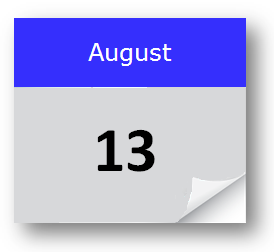In 1920 the “Battle of Warsaw” begins as part of the “Polish-Soviet War” (February 1919 – March 1921).
The Kingdom of Poland dates back to 1025 and on the 1st of July 1569, with the signing of the Union of Lublin, the Polish-Lithuanian Commonwealth was formed. Both countries remained in Union until the late 18th century when three great powers of Europe began to carve up the territories. The Russian Empire had become very powerful and had many victories against the Ottoman Empire and in order to prevent war between Russia, Austria and the Kingdom of Prussia it was agreed that they would each assume land from the Polish-Lithuanian commonwealth which would return the balance of power between these countries. On the 5th of August 1772 territory from the commonwealth was first seized and without any choice in the matter the Polish Parliament was forced to agree to the arrangement in 1773. This didn’t appease the countries of Russia and Prussia who invaded the commonwealth once more some twenty years later. On the 23rd of January 1793 the Second Partition was signed and even more territory lost. In 1794 the people of Lithuania and Poland, angered by the loss of their sovereignty, began to rebel in what became known as the “Kościuszko Uprising” but severely outnumbered the rebellion was soon crushed and on the 24th of October 1795 the Third Partition took place in response to the uprising and this effectively ended the sovereignty of Poland and the Commonwealth.
During World War I Austro-Hungary and Germany (which was the unification of Prussia, Saxony and Bavaria in 1871) wanted the Polish people to remain loyal and not take advantage of the situation and begin a rebellion. So on the 6th of November 1916 Austro-Hungary and Germany agreed to the formation of a semi-autonomous Kingdom of Poland. When the Central Powers seemed all but defeated on the 7th of October 1917 Poland declared their independence and with the defeat of Germany and Austro-Hungary came the Independence of Poland and Lithuania.
The Western leaders recognised the independence of Poland but Russia was still initiating their new Communist Government after their Revolution in 1917. The New Polish leader, Jozef Klemens Pilsudski, wanted to return the sovereignty of all Poland back to the territory it had before it’s first Partition in 1772. He believed that Russia would not accept the Independence of these nations and return of the territory which technically still remained part of Russia and the Ukraine. Pilsudski proposed a union once more between Poland and Lithuania as their combined strength may be more of a deterrent against Russian hostilities. But Pilsudski also wanted Poland to take the lead in this “Union” and this made Lithuania un-easy. Pilsudski also proposed an alliance with the Ukraine but they too felt un-easy.
The new Communist regime in Russia were pre-occupied with suppressing their anti-communist enemies at home. Meanwhile Polish forces had been relatively free to forcibly claim land from the new Lithuanian Republic, the Ukraine and Belorussia (now Belarus). The Poland army continued to take ground despite several requests by the British Government to desist from their campaign. Pilsudski ignored the request from Britain and continued pushing forward. The Communist Russian leader, Vladimir Lenin, made a proposal to Pilsudski that they would recognise the Polish territory up to the point they now occupied but Pilsudski wanted to continue negotiations. As the negotiations continued Pilsudski became increasingly untrusting of Lenin and began to prepare for possible war. On the 1st of November 1918 The Polish-Ukrainian war began and Britain once again sent a request for Poland to end their campaign and warned that they would not aid Poland if they began a war with Russia. On the 7th of May 1920 the Polish forces had captured Lviv, the capital of Kiev, which had caused condemnation from all the allied leaders from WWI.
But Russia had now settled its own internal affairs and the entire force of its army were ready to strike at the Polish forces. At the beginning of July 1919 Russian forces began drive the Polish out of the Ukraine. The Russian advance was quick and decisive, pushing the Polish army back towards Poland. The Allied leaders feared that Russia may use their advance into Europe as a way of expanding their revolution onto the rest of Europe so when requests came for aid the British and French governments sent military advisors to aid the Polish. The Russian forces soon reached the Polish capital of Warsaw but Britain had pushed for talks between the two nations and an armistice. Soviet Russia made some very strong demands giving Russia a lot of power over Poland. But in the interests of saving Polish forces and preventing Russia’s advance into Germany Britain advised the Polish government to accept the terms. But Poland where not willing to accept defeat and on the 13th of August 1920 they fought back against the Russian occupiers. The Russian advance into Poland was so quick that their supply lines were very weak and the huge Polish forces which included tens of thousands of civilians overwhelmed the Russians and by the 25th of August 1920 the Battle of Warsaw was over and Poland had won.
The Russians sought peace and Poland was also convinced by the League of Nations to also come to a diplomatic solution. After several months of negotiations both sides eventually signed an armistice on the 12th of October which began on the 18th of October 1920.
